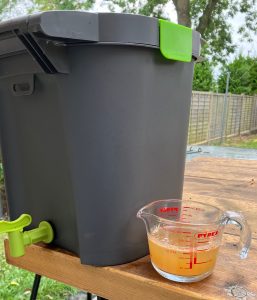When it comes to boosting the composting process, we have found a Bokashi bin to be the perfect partner for the Green Johanna.
We recently carried out trials involving additions of fermented food waste from a Maze Bokashi bin to a Green Johanna and found that temperatures in the Johanna rapidly increased as a result.
For our trials, we re-started a Johanna more or less from scratch, having previously removed large amounts of compost. Using a permanently installed insulation jacket and large amounts of Bokashi bran and carbon-rich materials, compost temperatures were around 30 degrees Celsius.
We added the contents of a Bokashi bin that had been fermenting for 21 days, followed by a full 1kg bag of Bokashi bran. We then added some mulch and stirred well with a garden fork, before completing the process with a thin layer of mulch.
The Johanna was then left for 48 hours. Temperatures rose to 66 degrees Celsius whilst outdoor temperatures were in the 0-10 degree range. After 48 hours we re-stirred to spread heat more widely through the Johanna. Using two Bokashi bins in rotation we repeated this cycle roughly every three weeks and got the same results.
We used the Green Johanna in combination with a regular kitchen caddy (as the Johanna needs regular feeding to maintain the hot composting process), twin-bin Bokashi system, Insulating Jacket, Bokashi Bran as an accelerant and plenty of mulch.
Photos show starting temperature at 30 degrees Celsius/adding fermented waste from a Bokashi bin/ adding Bokashi bran/temperature at 66 degrees Celsius.
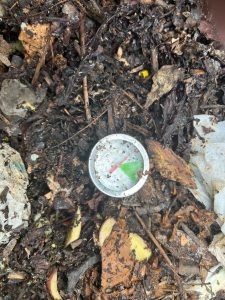
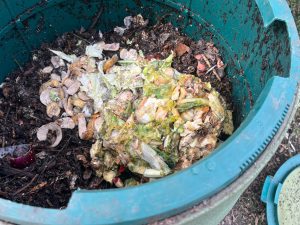
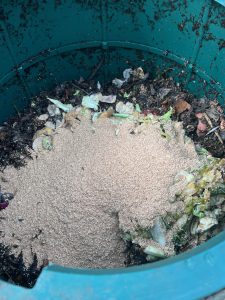
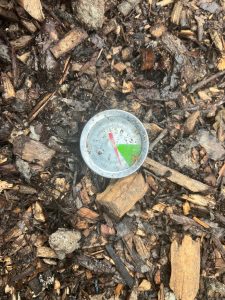
The Bokashi process was developed in Japan in the 1980s; the term means ‘fermented organic matter’ in Japanese. It involves adding all your food waste, cooked and uncooked, to a specially designed airtight Bokashi bin, with the addition of Bokashi in the form of a fermented bran or spray. The food waste is compressed with a compactor to eliminate as much air as possible as this is an anaerobic process. Once the bin is full, you close the airtight lid and leave for 2-3 weeks. Many people use two or three bins to keep the process going.
The bacteria (lactobacilli) in the bran or spray will create lactic acid which will effectively pickle the food waste rather than letting it decompose as it would in a regular food waste caddy. After a week or so, liquid should start to form in the Bokashi bin which should be drained using the tap. This ‘Bokashi tea’ can be used as a drain cleaner or diluted for use as plant food.
At the end of the fermentation period the waste food is a pre-compost mixture that can be added to a composter or buried in soil to become a soil enhancer. Its composition is such that virtually all its original nutrients, carbon and energy enter rapidly into the soil. No greenhouse gases are released to the atmosphere as they are during regular food waste decomposition in landfill.
Bokashi composting has traditionally proven particularly popular in urban environments where traditional garden composting is difficult.
Mark





